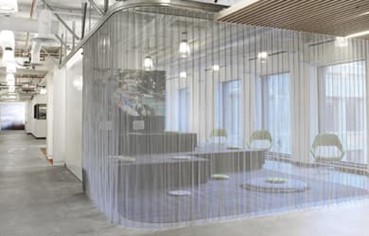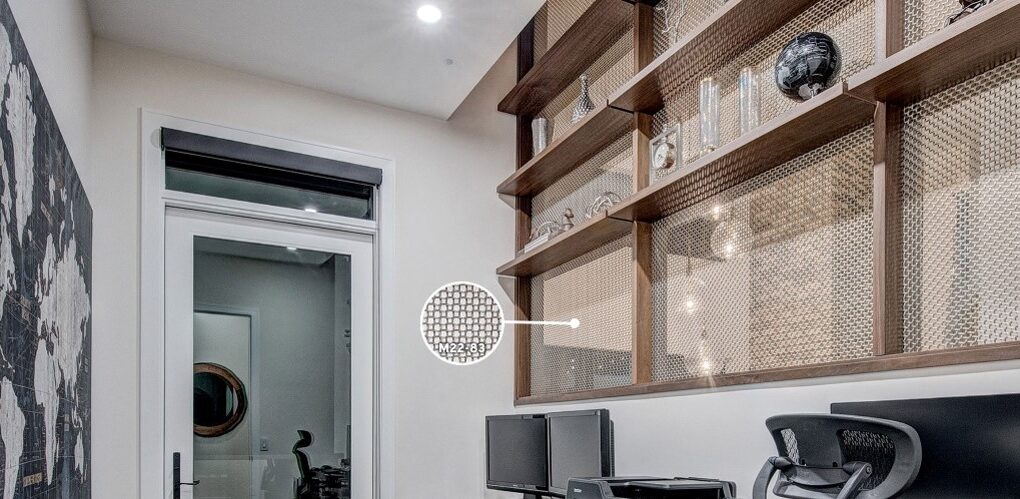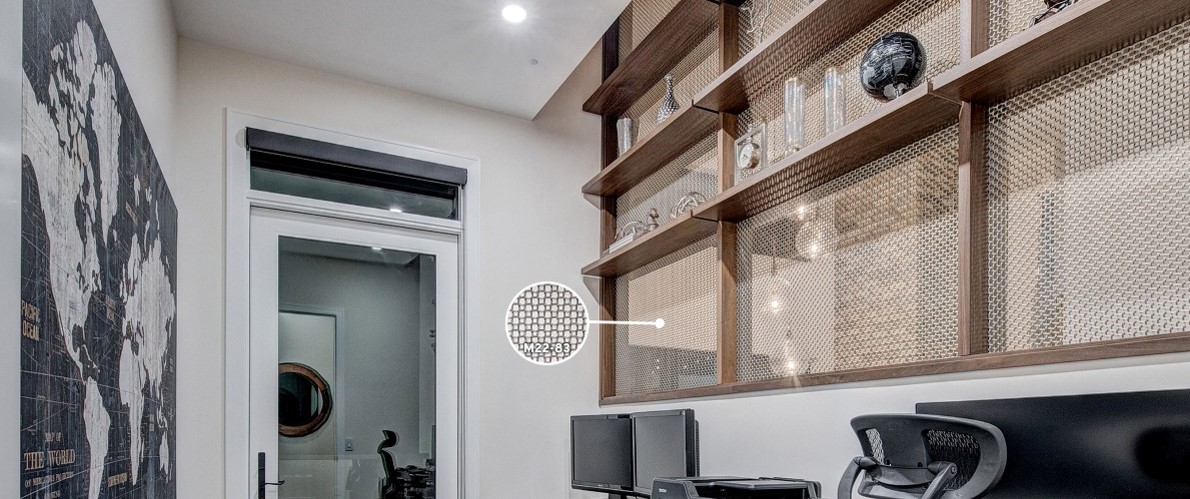As we approach 2026, the world of architecture is evolving rapidly, influenced by innovative materials and designs that blend form with function. Among the most intriguing trends to watch is the use of decorative mesh—a material that is redefining architectural boundaries. From creating striking facades to improving sustainability and lighting, decorative mesh is not just a design choice; it’s shaping the future of how we experience spaces.
In this post, we’ll explore how decorative mesh is becoming a key element in modern architecture, elevating buildings from mere structures to works of art.
1. Innovative Facades: The New Face of Architecture
One of the most exciting applications of decorative mesh in architecture is in building facades. Mesh allows architects to create dynamic, visually stunning exteriors that change with the light, weather, and time of day. In 2026, we’re seeing more architects embrace decorative mesh as a key material in dynamic facades—where the exterior is not just a static surface, but a part of the building’s living, breathing personality.
Mesh facades offer a sleek, modern look, while their perforated design can create mesmerizing effects like shadow plays and light filtering throughout the day. Furthermore, mesh can be engineered to be lightweight yet strong, providing both aesthetic appeal and structural integrity.
Example:
The La Grande Arche in Paris, reimagined with perforated mesh panels, creates a futuristic, ever-changing appearance while providing solar shading and ventilation for the building’s interiors. By 2026, we expect many more such buildings to embrace mesh as a key component in their exterior designs.
2. Sustainability Meets Beauty: Eco-Friendly Mesh Solutions
As sustainability continues to be a driving force in architecture, decorative mesh is a natural fit. Many mesh materials are made from recycled metals or biodegradable materials, making them eco-friendly options for green building projects.
Decorative mesh can help in the reduction of energy consumption by improving a building’s thermal performance. The perforations in the mesh allow air to flow freely, providing natural ventilation while reducing the need for mechanical cooling systems. In addition, mesh can be integrated with solar panels or green roofs, further enhancing the building’s sustainability credentials.
By 2026, decorative mesh is expected to play a pivotal role in eco-conscious architecture, helping architects meet global sustainability standards and reduce environmental footprints.
Example:
A green skyscraper in Dubai, incorporating mesh that integrates solar technology, harnesses the sun’s energy while providing a visually stunning exterior. This eco-friendly design has inspired other architects to explore mesh as a sustainable material for large-scale projects.
3. Privacy and Security with Style
In modern architecture, balancing privacy with aesthetic appeal is crucial. Decorative mesh provides an elegant solution for achieving both. Mesh can be used to create privacy screens, particularly in high-rise buildings, apartment complexes, or public spaces, allowing for natural light to filter through while still maintaining a level of seclusion.
Mesh is also playing a significant role in enhancing building security. Whether it’s for balconies, terraces, or entrances, the strength and resilience of decorative mesh make it an ideal material for protective barriers without compromising design.
Example:
A residential tower in New York incorporates decorative mesh panels on its balconies, providing privacy for residents while still allowing for views of the city skyline. The design is sleek, functional, and secure—showing how mesh can be seamlessly integrated into modern architecture.
4. Transforming Interiors with Mesh
While decorative mesh is often celebrated for its use in exteriors, its role in interior design is equally transformative. In 2026, more interior architects are turning to mesh for everything from room dividers to ceiling treatments.
Mesh can create a sense of openness while still demarcating space, ideal for open-plan offices, lofts, or public spaces that require both separation and flow. Furthermore, mesh can be combined with other materials like wood, glass, or metal to achieve a wide range of aesthetics—from industrial chic to minimalist elegance.
Example:
A hotel lobby in Tokyo showcases decorative mesh as part of its reception desk design, blending seamlessly with luxurious finishes and contributing to the room’s sense of sophistication without feeling overly enclosed or rigid.
5. Mesh as a Tool for Light and Shadow Play
One of the most captivating aspects of decorative mesh is its ability to manipulate light and shadow. Mesh’s perforated surface acts like a filter, diffusing natural sunlight in interesting and beautiful ways. When used as an architectural element, it creates intriguing patterns on walls, floors, and ceilings, transforming ordinary spaces into places of dynamic beauty.
In 2026, architects are experimenting with mesh to control the lighting environment within buildings, adding a layer of complexity and visual depth to interiors. Mesh can be incorporated into windows, skylights, or partition walls, offering a fluid and artistic design solution.
Example:
The Kuwait Cultural Center, designed with a mesh facade, plays with the shadows cast by the sun, creating a stunning visual effect that enhances the building’s artistic identity. The intricate patterns formed by the mesh evoke a sense of cultural heritage while meeting modern architectural needs.
6. The Future of Smart Mesh in Architecture
Looking ahead, smart mesh is expected to be one of the most exciting advancements in the world of architecture. Imagine mesh that is embedded with sensors, LEDs, or solar cells, enabling it to respond to environmental factors like light, temperature, and airflow.
In 2026, smart mesh might become a fixture in “intelligent” buildings, allowing architects to create adaptive facades that change based on environmental conditions, enhancing energy efficiency or privacy at different times of the day. This integration of technology and design will likely lead to more interactive, sustainable, and innovative architectural solutions.
Conclusion: Mesh is More Than Just a Material—It’s a Design Revolution
In 2026, decorative mesh is more than just a decorative element in architecture—it is an essential material that merges form with function. Its ability to transform facades, interiors, and even the way buildings interact with their environment makes it one of the most innovative materials shaping the future of architecture.
As architects continue to push the boundaries of design, decorative mesh will undoubtedly remain a staple, offering not only aesthetic beauty but also sustainability, privacy, and flexibility. Whether it’s enhancing natural light, improving energy efficiency, or creating dynamic visual effects, mesh is here to stay—paving the way for the architecture of tomorrow.
Are you ready to embrace the future of architecture? Whether you’re designing a new building or renovating an existing one, decorative mesh might just be the material that brings your vision to life. Stay tuned for more insights into how mesh is shaping the spaces we live, work, and play in decorative mesh in architecture 2026.


